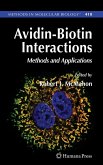A diverse collection of protocols ranging from the latest inventions and applications to some classic, but still frequently used, methods for studying B-lymphocyte development and function in higher animals. These readily reproducible protocols follow the successful Methods in Molecular Biology(TM) series format, each one offering step-by-step laboratory instructions, an introduction outlining the principle behind the technique, lists of equipment and reagents, and tips on troubleshooting and avoiding known pitfalls.
B-lymphocyte development and function remains an exciting area of research for those interested in the physiology and pathology of the immune system in higher animals. While recent advances in genetics and cellular and molecular biology have provided a large spectrum of powerful new experimental tools in this field, it is both time consuming and often very difficult for a student or just any bench-side worker to identify a reliable experimental protocol in the ocean of the literature. The aim of B Cell Protocols is to provide a collection of diverse protocols ranging from the latest inventions and applications to some classic, but still frequently used methods in B-cell biology. The authors of the various chapters are all highly qualified scientists who are either the inventors or expert users of these methods. Their extensive experience in mastering a particular method provides not only the step-by-step details of a reproducible protocol, but also useful troubleshooting tips that readers will appreciate in their daily work. We hope that this book will be helpful for both beginning and experienced researchers in the field in designing or modifying an experimental approach, and exploring a biological question from multiple angles.
B-lymphocyte development and function remains an exciting area of research for those interested in the physiology and pathology of the immune system in higher animals. While recent advances in genetics and cellular and molecular biology have provided a large spectrum of powerful new experimental tools in this field, it is both time consuming and often very difficult for a student or just any bench-side worker to identify a reliable experimental protocol in the ocean of the literature. The aim of B Cell Protocols is to provide a collection of diverse protocols ranging from the latest inventions and applications to some classic, but still frequently used methods in B-cell biology. The authors of the various chapters are all highly qualified scientists who are either the inventors or expert users of these methods. Their extensive experience in mastering a particular method provides not only the step-by-step details of a reproducible protocol, but also useful troubleshooting tips that readers will appreciate in their daily work. We hope that this book will be helpful for both beginning and experienced researchers in the field in designing or modifying an experimental approach, and exploring a biological question from multiple angles.








